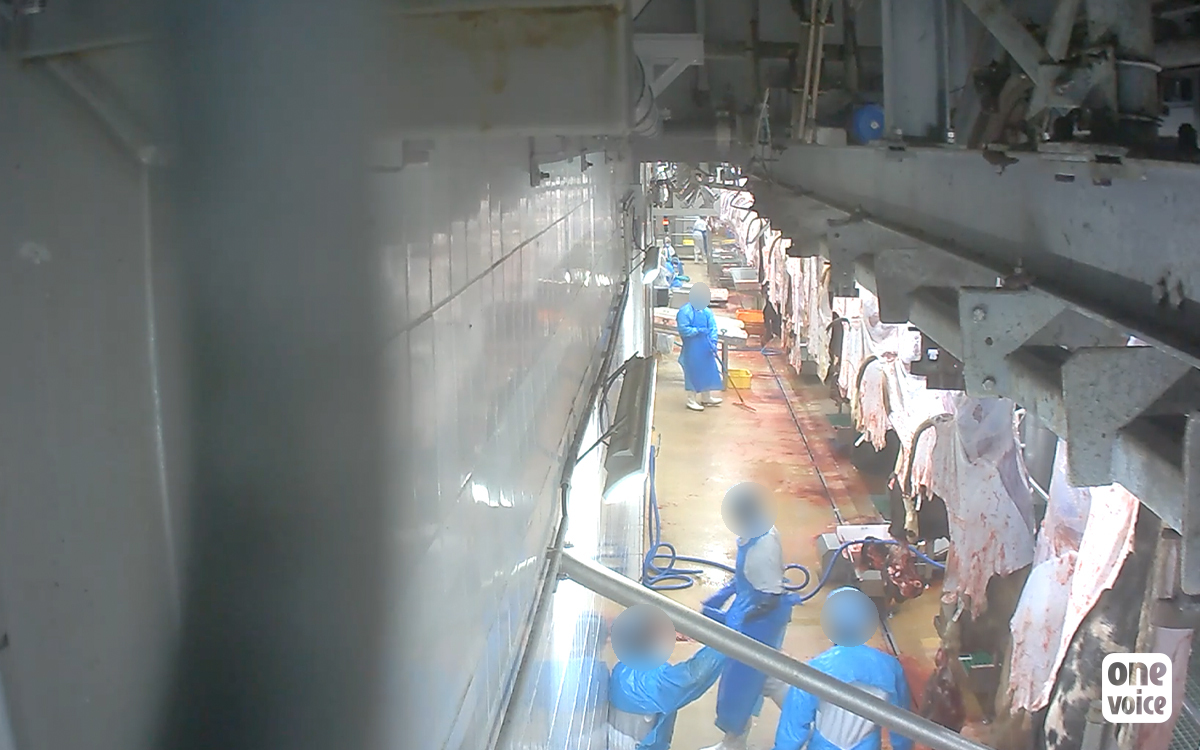
Calfskin is a lucrative product, a pollutant and the result of animal suffering
Calfskin is sold at a very high price. A spotlight on the lies connected to this animal by-product which is neither green nor anti-waste and which is the result of animal suffering.
As we reported in our investigation at the Sobeval slaughterhouse in the Dordogne, French calfskins are converted into leather and sold at a very high price, at the expense of these conscious beings. Yet this issue, which is the result of animal suffering, is relatively unknown. The agri-food and luxury goods industries, if not vague on their origin, at least only focus on the quality of the finished product. Yet leather is not an eco-friendly product. It is neither green nor anti-waste. And the calves, in all of this, are only considered as prime and very high added value pre-materials. However, high quality alternatives exist. We call for luxury brands to turn to these instead.
Leather as a green product?
Just like fur, leather has nothing to offer as an eco-friendly product. It is a skin, which disintegrates over time. Yet to become resistant to rotting, it has to undergo numerous changes, all as pollutant as one other.
It is thought that the total number of animals killed for their skin every year in the world, 1.4 billion, have been bred or captured. However, the leather industry remains impenetrable and difficult to track down due to the virtually non-existent trading laws.
To convert raw hide into leather, whatever species it may be, the fur, flesh and sebaceous glands of the animals are removed during the tanning process by mechanical and chemical methods. Tannic acids, chromium, aluminium… Sulphides are used to break down the fur, chlorides for scraping and preservation. They are dyed with tannic acid and other chemical substances, which prevents rot and makes them water resistant. The use of chromium salts in the stabilising process is particularly concerning… “Tanning is an industry which has the potential to produce a high amount of pollution”, as the European Commission recognised in 2003. It is even one of the five most polluting industries in the world.
All parts of the calf are the best – or are they? Pretences and lies surrounding this luxury leather
Some think that leather is an anti-waste product which would go to waste if it wasn’t “priced” alongside meat, notably beef. Incorrect. It is the message spread by the meat and leather lobby groups which go hand in hand. But what is the ‘anti-waste’ by-product? The intensive farming industry also breeds calves, which are essential to the production of milk and other by-products.
On the one hand, when litres and litres of cows’ milk is sold off by the supermarkets to quench the thirst of families cradled to the tunes of the dairy products lobby group, the skins of these little ones are torn off at a very high price by luxury brands and increase their profits considerably. A disgusting higher bid.
What are you wanting us to believe? It’s not an anti-waste product but in fact a highly lucrative product.
Plant-based materials to replace leather!
In France, according to the National Leather Council, the sector comprises 12,800 companies, from breeding to the distribution of the finished products, hundreds of thousands of jobs, generating a turnover of more than 25 billion Euros (of which 13 billion Euros is from export). Our country is one of the leaders in calfskins and exotic skins. When you know that the French bovine population is the most important in Europe, with 19 million animals, of which more than a quarter are calves, you go pale: so much pollution created by agriculture from breeding (deforestation, use of water…) and the methanation of the planet which comes from it… So many lives sacrificed…
Generating just as much suffering before and on the slaughter lines as profits, this industry would be well advised to move on to the next stage of its development. We cannot believe that these big luxury brands are going to support these atrocities any longer. Because these times are in urgent need of another model. More and more brands and consumers are turning to refined and also versatile alternatives to leather. Derived from fruits and vegetables or as a result of recycling, these materials need little treatment and leave the animals unharmed. They are therefore beneficial for wildlife, plants and our existence on earth in the long term.
Sign our petition to close the Sobeval calf slaughterhouse, which supplies tanneries of the luxury goods industry! We are also calling for luxury goods companies to turn to alternatives to leather.
Translated from the French by Sophie Martin